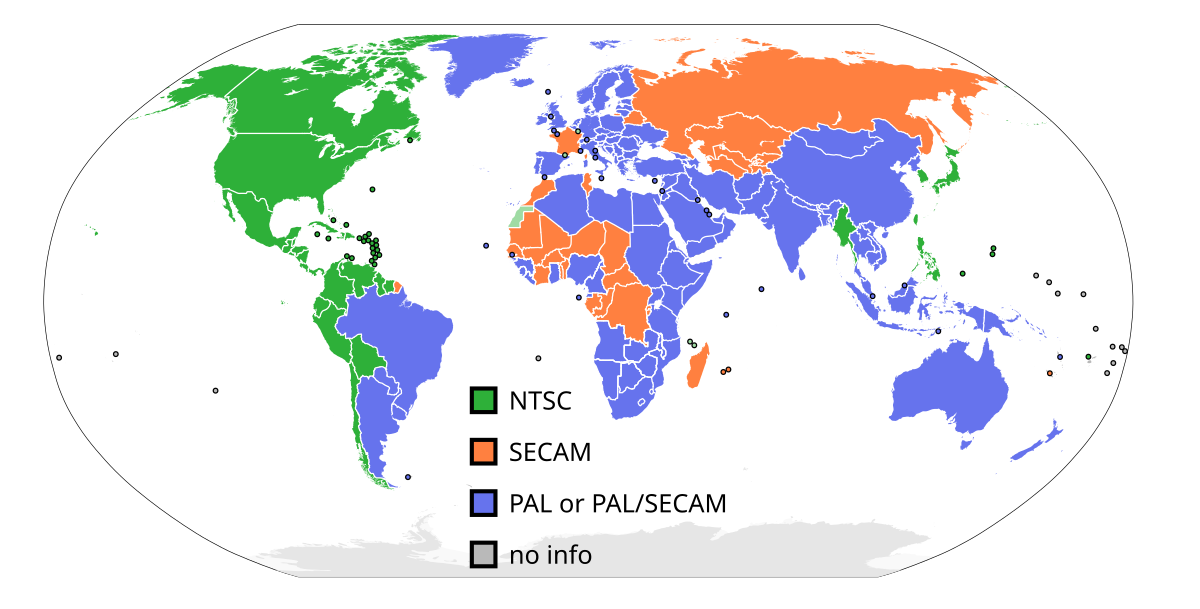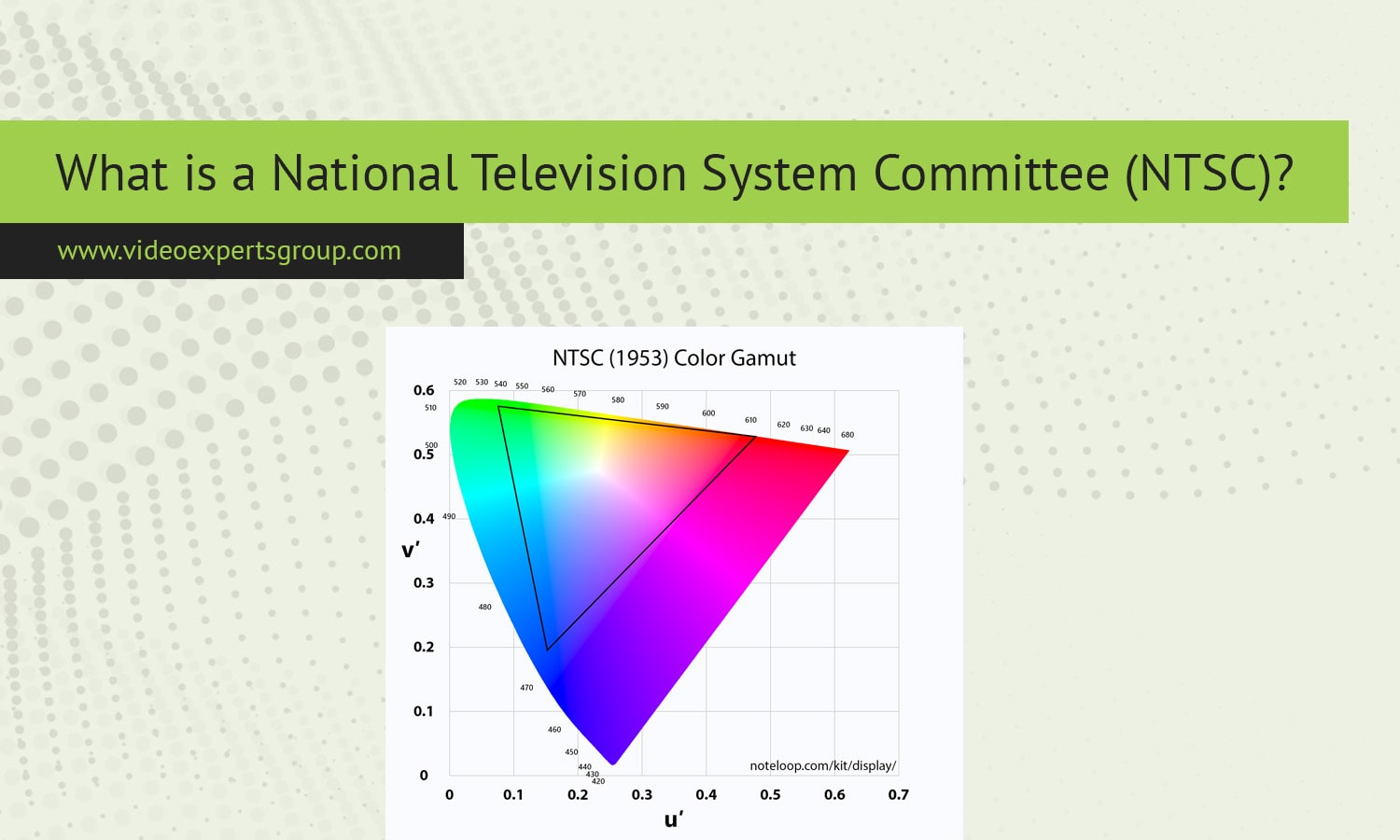The National Television System Committee (NTSC) is a video encoding system that was developed in the United States in the mid-20th century to standardize color television broadcasts. NTSC became the dominant system for analog television transmission in North America and several other parts of the world. While it was primarily used for broadcast television, it also played a major role in other video applications, such as security cameras, VHS tapes, and video games. Despite its success, NTSC has largely been replaced by digital formats in recent years, but it remains an important part of video history and is still used in some contexts.
Meaning
NTSC is a color television encoding system developed by the National Television System Committee in 1941. Initially created to standardize black-and-white television transmission in the United States, NTSC was later adapted in 1953 to include color broadcasts. The system is based on transmitting 525 lines of resolution per frame, using a frame rate of 30 frames per second (FPS). One of its key features is the way it encodes color information, using a technique that is compatible with older black-and-white televisions, ensuring a smooth transition to color broadcasting.
NTSC is designed to work with the 60 Hz power supply found in countries like the United States and Japan. This power supply rate is linked to the system's 30 FPS frame rate. Although NTSC is an analog system, its standards have influenced the development of early digital video formats.
What is NTSC Used For?
NTSC has historically been used for broadcast television, allowing television networks to transmit video signals over the airwaves. It was the primary television standard in the United States, Canada, Japan, South Korea, and other countries. Over the years, NTSC has also been widely used in:
- Video recording formats such as VHS, Betamax, and DVD, which often support NTSC encoding.
- Security cameras, especially in regions where NTSC television systems were standard.
- Video games and consoles that were designed for NTSC-compatible televisions and screens.
- Camcorders and video playback devices, which recorded and output video in NTSC format.
Today, NTSC is mostly found in legacy equipment or specific applications that require compatibility with analog video systems. With the transition to digital broadcasting and high-definition formats, NTSC has largely been replaced by newer systems like ATSC (Advanced Television Systems Committee) in the U.S. for television broadcasting.
How Does NTSC Work?
NTSC transmits video using 525 horizontal scan lines for each frame, with a frame rate of 30 frames per second (FPS). It divides the image into two fields, where each field is displayed at 60 Hz, or 60 times per second. One field contains all the odd-numbered lines, and the next contains all the even-numbered lines. This technique is called interlaced scanning, and it helps create the illusion of fluid motion while conserving bandwidth.
For color information, NTSC uses a YIQ color model. The Y component represents the brightness (luminance) of the image, which is compatible with older black-and-white TVs. The I and Q components carry the color (chrominance) information, but are transmitted in a way that reduces bandwidth and minimizes interference. The brightness and color signals are combined into one signal and then transmitted over the air.
One of the drawbacks of NTSC is that its color signal can become distorted if the transmission signal is weak or interrupted. This problem was more pronounced in early television broadcasts but improved over time with advancements in broadcasting technology.
Which Countries Use NTSC System?

NTSC has been used predominantly in the United States, Canada, and Japan. Other countries and regions that adopted NTSC include:
- South Korea
- Mexico
- Taiwan
- Philippines
- Parts of Central and South America, including Colombia, Ecuador, and Venezuela.
NTSC is tied to regions that use 60 Hz power grids, as the system's 30 FPS frame rate is synchronized with this power supply frequency. In contrast, PAL (Phase Alternating Line) and SECAM systems are used in many other parts of the world, particularly in Europe, Africa, and Asia, where the power grid operates at 50 Hz.
What is an NTSC Security Camera?
An NTSC security camera is a surveillance camera that captures and transmits video using the NTSC encoding system. These cameras are designed to operate in regions where NTSC is the standard video format, like the U.S., Japan, and Canada. NTSC security cameras are compatible with NTSC video recorders and monitors, ensuring smooth video playback and reliable performance.
NTSC security cameras typically operate at 525 lines of resolution and a frame rate of 30 FPS. They offer smooth, consistent video recording but may not be directly compatible with PAL-based systems without using a converter.
NTSC Resolution
NTSC operates at a standard resolution of 720x480 pixels in a 4:3 aspect ratio for traditional analog TV broadcasts and video recordings. This resolution is considered Standard Definition (SD) and was widely used before the advent of digital and high-definition television.
When NTSC is converted to digital formats, the resolution remains 720x480, but it can also support widescreen 16:9 aspect ratios by adjusting the pixel aspect ratio. However, the clarity and detail of NTSC video are lower compared to modern high-definition formats.
NTSC Frame Rate
NTSC video operates at a frame rate of 30 frames per second (FPS), or more precisely, 29.97 FPS. This frame rate is tied to the 60 Hz electrical power supply used in countries where NTSC is standard. The slightly lower 29.97 FPS frame rate was introduced to accommodate color broadcasts, allowing for more efficient transmission of color information without interfering with the audio signal.
NTSC’s frame rate allows for smooth video playback, particularly for content like television shows, movies, and security footage. However, it can sometimes result in slightly choppier motion compared to higher frame rates used in modern digital formats.
Advantages and Disadvantages
Advantages of NTSC
-
Widespread Adoption: NTSC was the standard in North America, Japan, and other regions, making it widely compatible with legacy equipment.
-
Smooth Video Playback: With a 30 FPS frame rate, NTSC provided smooth motion for TV broadcasts and video content, making it suitable for a variety of applications.
-
Backward Compatibility: NTSC’s design allowed older black-and-white TVs to display color broadcasts without requiring new equipment.
Disadvantages of NTSC
-
Lower Resolution: NTSC’s 720x480 resolution is lower than modern high-definition formats, leading to less detailed images and video quality.
-
Color Inconsistency: NTSC’s color signal is prone to distortion in weak transmission signals, which can result in color inaccuracies or color shifting.
-
Limited Use Today: With the transition to digital broadcasting, NTSC is becoming less relevant, and many countries have switched to modern digital standards like ATSC or DVB.
FAQ
NTSC was a pioneering video format that set the standard for analog television broadcasts in several regions of the world. While its use is becoming less common, understanding NTSC remains essential for working with older video equipment or when dealing with cross-region video formats. As digital standards continue to evolve, NTSC’s legacy as a foundational technology for color television remains significant.
















